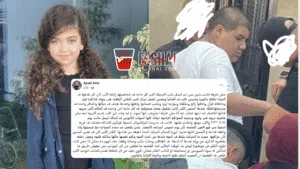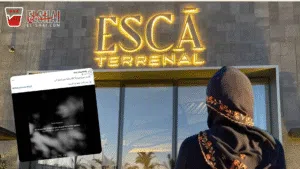If OKHTEIN can charge thousands, why can’t local artists? The double standards are louder than ever.
The appearance of OKHTEIN’s founders, Monaz and Aya Abdelraouf, on Shark Tank Egypt was supposed to spotlight major Egyptian success stories. Instead, it opened a heated national conversation about tone, elitism, and who gets to decide what art is worth.
Everything escalated when the sisters questioned the price of a hand-painted wearable art piece by Somaia Abolezz, who asked 19,000 EGP for it. Their comment implied that the materials didn’t justify the cost. The tone didn’t sit well with viewers, and the clips spread across social media faster than the full context ever could.
The public reaction was immediate: “Luxury arrogance.”
And for many viewers, it wasn’t about the number at all. It was about who said it and what their own brand represents.
When a 19k handmade piece is “too expensive”… but a 95k bag isn’t?
OKHTEIN is known for selling bags that run into thousands, sometimes tens of thousands. So people naturally asked the obvious question:
If OKHTEIN can price their items however they want, why can’t a local artist do the same?
Especially when that local artist is selling a one-of-a-kind, hand-painted piece where the value isn’t just leather and stitching, it’s creativity, identity, and expression. Materials are only one part of the story.
The same rule doesn’t seem to apply to OKHTEIN’s products, which are marketed as “luxury” despite being produced locally and often made with materials similar to those used by other skilled Egyptian workshops.
That’s why the backlash hit so hard. The feedback felt less like constructive criticism and more like a double standard.
And realistically speaking, OKHTEIN didn’t exactly become “luxury” because of quality.
This is where the conversation shifts from surface-level drama to uncomfortable truth.
Despite their global fame, OKHTEIN has never been known for incomparable craftsmanship. Their rise was driven by excellent branding, smart positioning, intentional PR, and paid placements with international stylists who ensured celebrities wore their pieces.
The sisters never denied this.
They openly discussed how stylists were contacted, gifted, and encouraged to feature the bags — a normal, legitimate global fashion practice, but also a reminder that OKHTEIN’s value was built on image rather than necessarily superior quality.
Beyoncé didn’t carry an OKHTEIN bag because the stitching changed her life. She carried it because it represented Egyptian heritage and a specific aesthetic she hadn’t been exposed to before.
Some might call that appreciation. Others argue it edges toward orientalism — loving “Egyptian symbolism” as a costume rather than valuing the craft itself. That topic deserves its own article, but it sits heavily in the background of this entire debate.
So why was Somaia’s price treated like a crime?
This is the heart of the reaction online.
If OKHTEIN built a global brand on storytelling, aesthetics, symbolism, and culture—not just materials—then why is a local artist suddenly expected to justify her pricing based solely on fabric cost?
Why is “luxury narrative” acceptable for big brands but “overpricing” when a small artist uses it?
Why are handmade creators asked to defend their worth while fashion brands are celebrated for “premium identity”?
Egyptians love luxury branding, but many still hesitate to see local artists as deserving of the same premium treatment. OKHTEIN benefited from that mindset for years. Somaia challenged it — and the reaction exposed the bias in plain view.
So was OKHTEIN giving honest feedback… or flexing hierarchy?
It depends on who you ask.
Some viewers felt the sisters were straightforward, offering direct business-critical feedback.
But for many Egyptians, the power dynamic felt off.
Two founders who built their empire through branding, PR, and narrative were questioning the value of someone whose entire product is the art, not the marketing that goes with it.
That contrast is exactly why the topic refuses to disappear online.
The real takeaway: Egypt’s creative scene is changing, and people are done with gatekeeping
The backlash isn’t about one Shark Tank episode.
It’s about years of rewarding polish, connections, and carefully curated “luxury vibes” over actual creativity.
Somaia Abolezz represents a different direction — one where art is allowed to hold its own value without needing international validation to justify it.
OKHTEIN’s comments landed badly because the public no longer accepts the idea that only certain brands deserve to be treated as “premium.”
People are now defending local art with the same energy they once reserved for designer labels. And whether OKHTEIN intended it or not, their feedback forced Egypt to confront a truth many avoided:
We love saying “support local,” but deep down, many still believe only luxury brands deserve luxury prices.
This time, Egyptians pushed back. And they were loud about it.
If you can afford Somaia’s pieces, support her.





